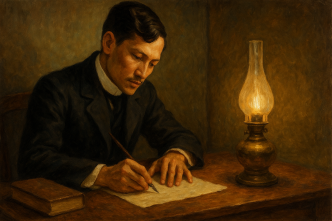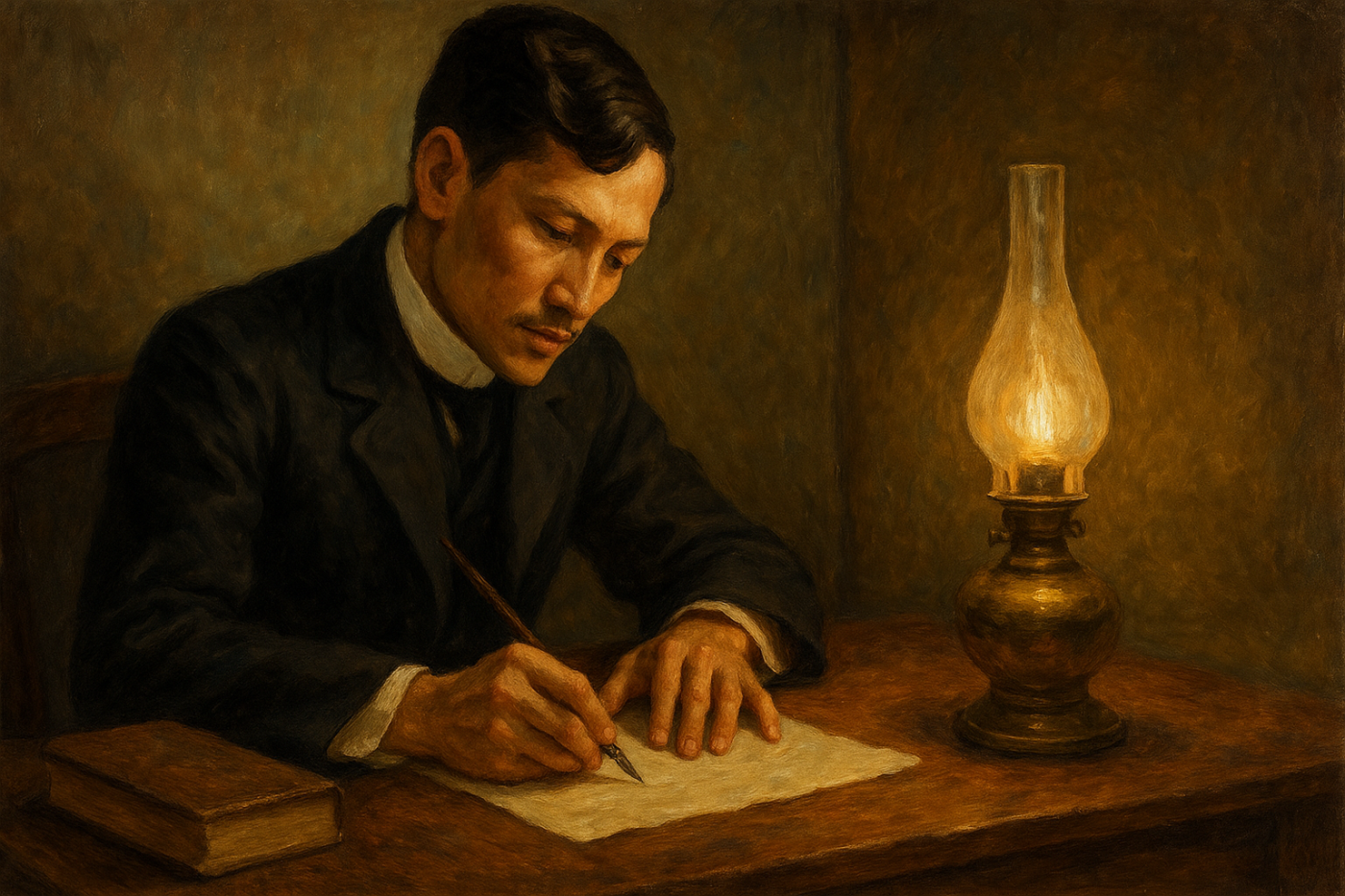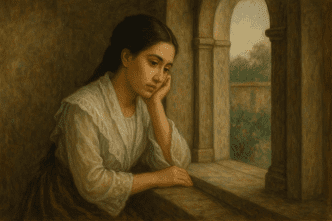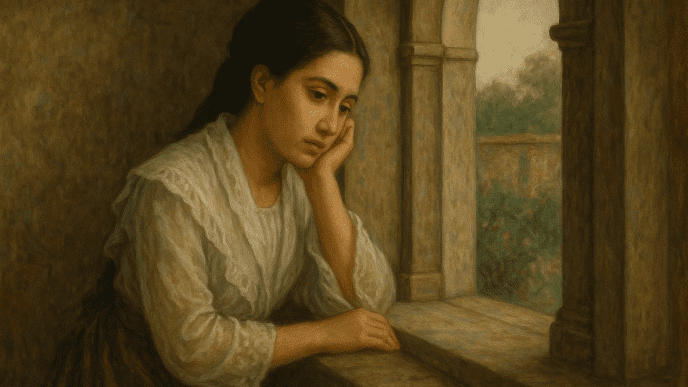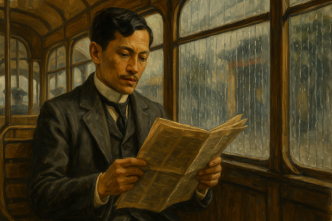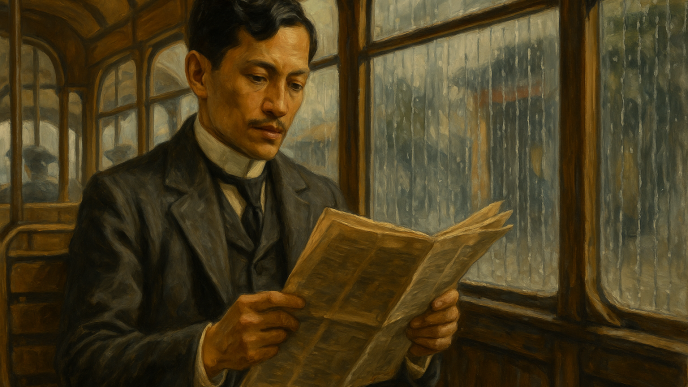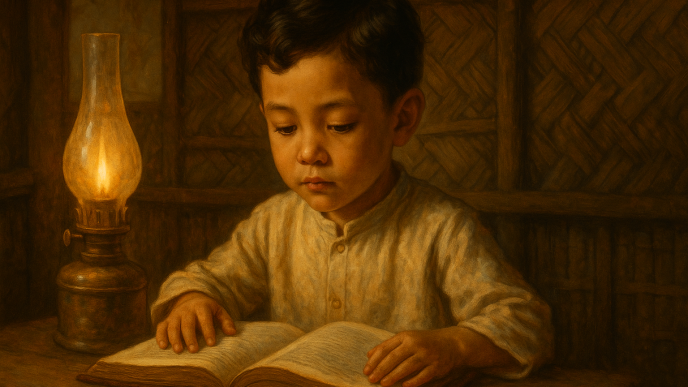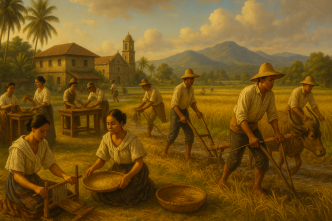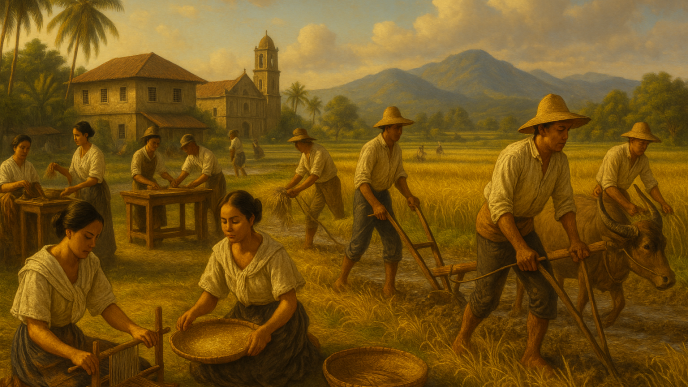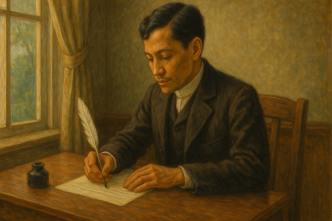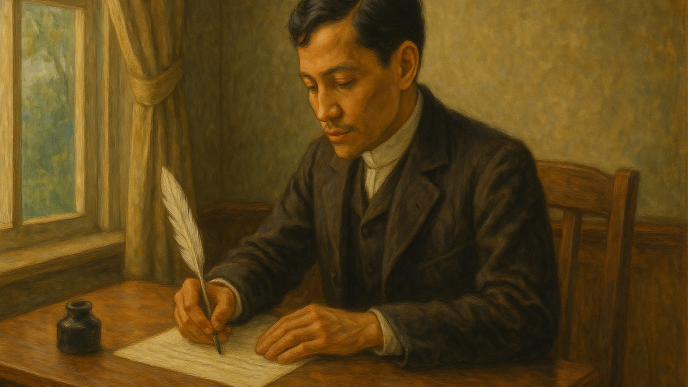Quick Summary
The pen names of Jose Rizal were essential tools he used to write safely and strategically during Spanish colonial rule. His verified pseudonyms include Laong Laan, Dimasalang, P. Jacinto, Agno, and his stylized authorial signature J. Rizal.
Introduction
The pen names of Jose Rizal reveal a writer who understood the risks of expressing truth in a colonized society. Writing in La Solidaridad, in private journals, or in letters, Rizal often needed to mask his identity to avoid persecution.
Each pseudonym had a purpose — some were used for public essays, others for quiet reflection, and some for early works before his name became politically charged. Together, they offer a deeper understanding of how Rizal navigated censorship, danger, and the complex world of reformist activism.
Laong Laan
Laong Laan is one of the most widely used pen names of Jose Rizal, appearing in several essays published in La Solidaridad. The phrase comes from old Tagalog and means “ever prepared” or “always ready,” embodying a writer who approached national issues with vigilance and steady purpose.
Articles signed under Laong Laan often carried a calm yet persuasive tone, addressing education, morality, and the need for peaceful reform. By using this pseudonym, Rizal created a persona that was firm, principled, and intellectually prepared for the long struggle toward progress. Readers of his time recognized Laong Laan as a dependable and reasoned voice in the reformist movement.
Dimasalang
Dimasalang is perhaps the most famous of the pen names of Jose Rizal. Meaning “untouchable” or “unblemished,” it symbolized a writer who could not be corrupted or silenced by threats. This name also served as Rizal’s Masonic identity, linking his reformist efforts with the ideals of brotherhood and enlightenment.
Essays written under Dimasalang tended to be outspoken, analytical, and assertive, challenging abuses and calling for structural change. This pseudonym gave Rizal a bolder voice, one that resonated with Filipinos seeking courage in written form. Dimasalang remains one of his most enduring identities in history.
P. Jacinto
P. Jacinto is a more personal and contemplative pseudonym used by Rizal, particularly in his Dapitan exile. He adopted this name in his private journal, Diario de P. Jacinto, where he wrote about philosophy, solitude, nature, and the meaning of patriotism.
Under this pen name, his writing became introspective, exploratory, and deeply emotional — a contrast to the public tone of his reformist essays. P. Jacinto shows the quieter side of Rizal, the man who contemplated inner life as much as national struggle. It is one of the pen names of José Rizal that gives modern readers rare access to his intimate thoughts.
Agno
Agno is a verified but lesser-known pen name, used sparingly in Rizal’s correspondence and certain early writings. The name is believed to reference the Agno River in Luzon, a symbol of continuity, movement, and rootedness in the Filipino landscape.
When Rizal used Agno, his tone tended to be reflective and grounded, sometimes addressing cultural themes. Though not as prominent as Laong Laan or Dimasalang, Agno adds depth to the pen names of Jose Rizal by revealing his connection to place and identity. It stands as a subtle reminder of the land and heritage he defended through his writings.
J. Rizal
Before he became a highly monitored figure, Jose Rizal sometimes used the simplified signature “J. Rizal” in early works, especially before Noli Me Tangere expanded his public profile. This signature was not a full pseudonym but a stylistic way to soften his visibility in publications that carried sensitive ideas. It was a careful balance — recognizable enough for credibility, yet discreet enough to avoid immediate suspicion.
As one of the early pen names of Jose Rizal, “J. Rizal” represents a transitional identity, when he was emerging as a writer but not yet the prime target of colonial scrutiny.
Why Rizal Used Multiple Pen Names
The pen names of José Rizal were part of a broader strategy to survive and to be heard. In an era when any criticism of the government could result in exile or death, pseudonyms allowed him to publish freely while reducing political risk. They also gave him flexibility: Laong Laan for measured essays, Dimasalang for bold critiques, P. Jacinto for intimate reflections, Agno for cultural pieces, and J. Rizal for early public writing.
These identities allowed him to adapt to the tone, topic, and audience of each piece, making his literary output both versatile and resilient.
Pen Names Versus Personal Aliases
It is important to distinguish the pen names of José Rizal from his practical aliases. “Jose Mercado,” used on his 1882 passport, was an alias for safe travel, not a literary pseudonym.
Childhood nicknames like “Pepe” or labels given by others, such as “Doctor Uliman,” also fall outside the category of pen names. Historical accuracy requires separating casual names from documented pseudonyms found in his publications, letters, and journals.
The Legacy of Rizal’s Pseudonyms
The pen names of José Rizal continue to serve as cultural markers of the reformist struggle. Each pseudonym carries meaning that extends beyond the essays they signed. Laong Laan conveys readiness; Dimasalang symbolizes courage; P. Jacinto offers introspection; Agno anchors him to the Filipino landscape; and J. Rizal reflects the cautious beginning of a public intellectual.
Taken together, they demonstrate how one man used language — in all its subtlety and power — to challenge an empire.
Conclusion
The pen names of José Rizal provide a window into his strategic and multifaceted mind. Each pseudonym was crafted to fit a particular purpose, allowing him to write boldly while protecting himself from the dangers of colonial rule.
Understanding Laong Laan, Dimasalang, P. Jacinto, Agno, and J. Rizal enhances our appreciation of Rizal not only as a national hero but also as a masterful communicator who used every tool available to advance the cause of his people. These pen names are more than historical details — they are enduring symbols of his courage, intelligence, and commitment to truth.
Sources and References
These are the authoritative works confirming Rizal’s verified pseudonyms:
- Wenceslao E. Retana, Vida y Escritos del Dr. José Rizal (Madrid, 1907)
- Ambeth R. Ocampo, Meaning and History: The Rizal Lectures (Ateneo de Manila University Press, 1999)
- Epistolario Rizalino, Vol. I–VI, National Historical Commission of the Philippines
- Austin Coates, Rizal: Philippine Nationalist and Martyr (Oxford University Press, 1968)
- Retana’s annotated bibliography of Rizal’s writings
- La Solidaridad newspaper archives (1889–1895)
- National Library of the Philippines, Manuscript Division
